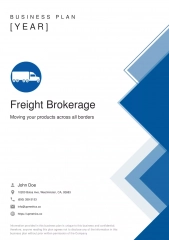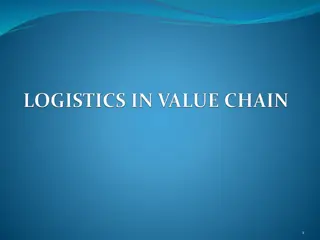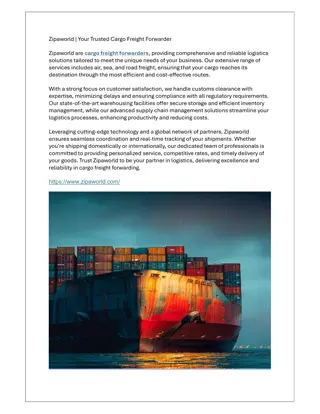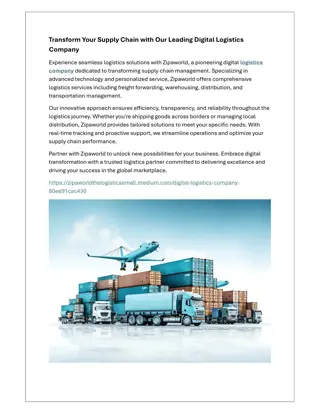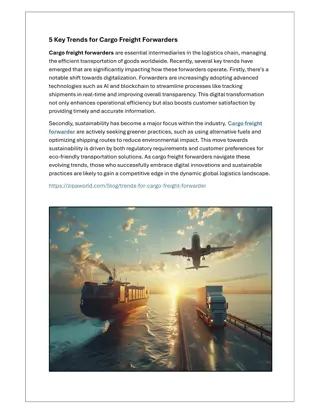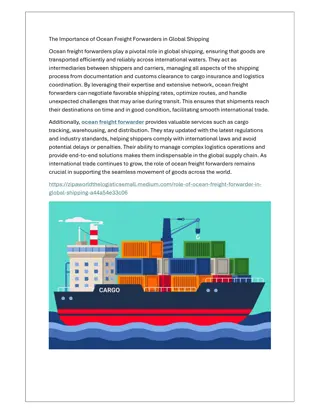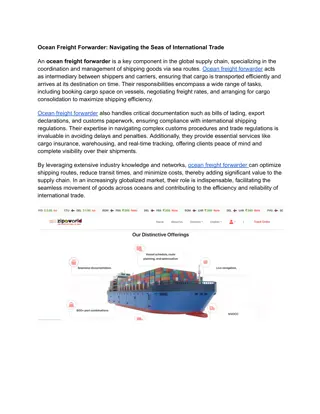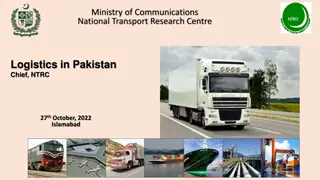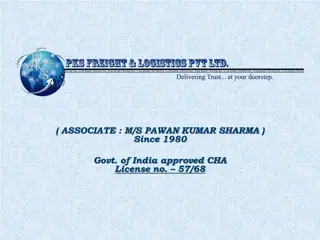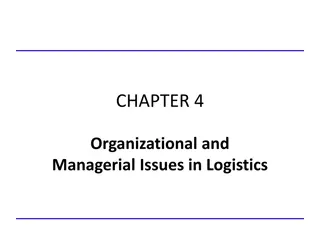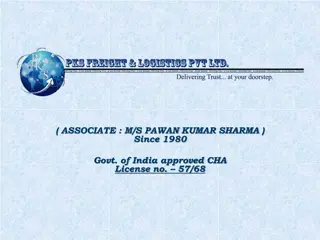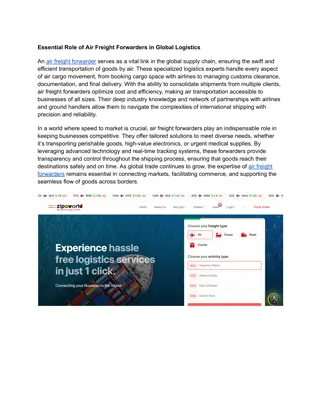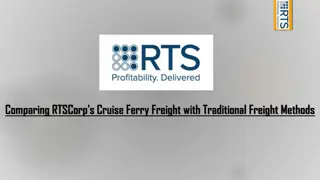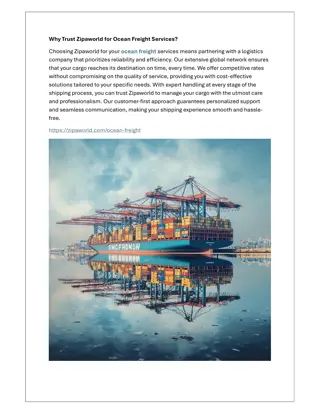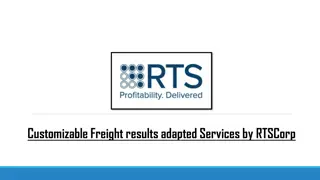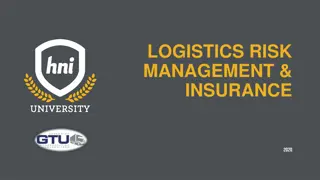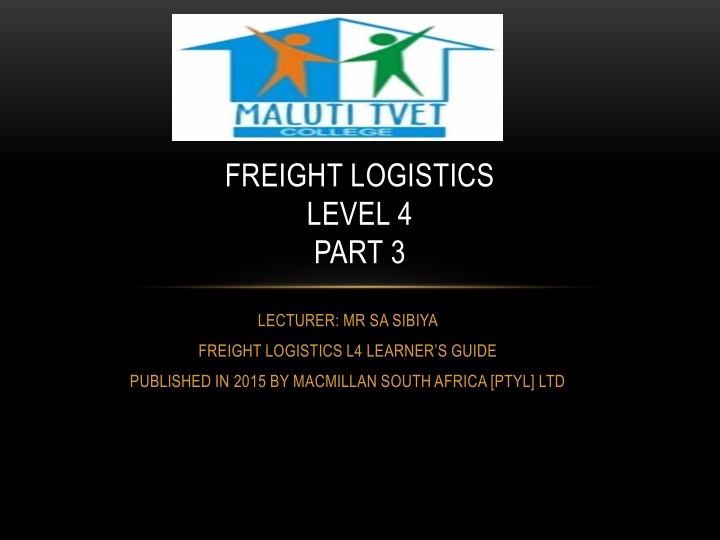
National Freight Logistics Strategy in South Africa
Explore the National Freight Logistics Strategy in South Africa focusing on addressing inefficiencies in the industry through institutional improvements, service delivery enhancements, and infrastructure development. Learn about the purpose, challenges, and goals of the strategy to optimize the country's freight transport system.
Download Presentation

Please find below an Image/Link to download the presentation.
The content on the website is provided AS IS for your information and personal use only. It may not be sold, licensed, or shared on other websites without obtaining consent from the author. If you encounter any issues during the download, it is possible that the publisher has removed the file from their server.
You are allowed to download the files provided on this website for personal or commercial use, subject to the condition that they are used lawfully. All files are the property of their respective owners.
The content on the website is provided AS IS for your information and personal use only. It may not be sold, licensed, or shared on other websites without obtaining consent from the author.
E N D
Presentation Transcript
FREIGHT LOGISTICS LEVEL 4 PART 3 LECTURER: MR SA SIBIYA FREIGHT LOGISTICS L4 LEARNER S GUIDE PUBLISHED IN 2015 BY MACMILLAN SOUTH AFRICA [PTYL] LTD
TOPIC: THE NATIONAL FREIGHT LOGISTICS STRATEGY Learning Outcomes: Justify the purpose of the National Freight Logistics Strategy. Discuss, with examples, the institutional and regulatory environment and describe its impact on the industry. Examine and discuss the different modes of transport in terms of infrastructure, operations and regulation. Identify and explain the main freight logistics nodes. Identify and explain the main freight logistics corridors.
NATIONAL FREIGHT LOGISTICS STRATEGY The National Freight Logistics Strategy aims to address (correct) the inefficiencies (unproductiveness) in the freight transport industry by focusing on the following aspects below: Freight logistics institutional and regulatory (monitoring) environment. Service delivery concerns and constraints (limitations). Modes in terms of infrastructure (physical facilities), operations (working) and regulation (monitoring). Nodes (a point in network or diagram) and major freight transport corridors (area defined by one or modes of transportation like highways, railroads or public transit which share a common course. Modal cross cutting issues . Vision for a best possible state of freight logistics in South Africa. Strategy implementation (execution) guidelines (statement to determine a course of action)
PURPOSE OF THE NATIONAL FREIGHT LOGISTICS STRATEGY. Aims to develop a more productive freight system that can access currently excluded service providers and owners. Aims to reduce freight transport costs ( costs of transporting goods) and reduce traveling and handling time. National freight logistics strategy and government are trying to open up the freight industry for competition by allowing private sector to participate, this seeks to do away with monopoly (having only one transport provider) in the freight transport market. The main purpose of the National freight logistics strategy is to overcome the challenges in the South African freight transport system.
PROBLEM STATEMENT OF THE FREIGHT LOGISTICS SECTOR. The freight system in South Africa is fraught (worrying) with inefficiencies (incapable) at system and firm levels. There are infrastructure shortfalls (shortages) and mismatches (unequal allocation of infrastructure), the institutional structure of the freight sector is inappropriate, and there is lack of integrated planning (lack of working together when planning among the modes). Information gaps and asymmetries bound (having parts which fail to correspond to one another in the chain of information), the skills base is deficient (not enough or not equal to the task), and the regulatory frameworks ( monitoring bodies) are not capable of resolving problems in the industry. FAILING TO MAKE THE BEST USE OF THE TIIME AND RESOURCES IN THE FREIGHT LOGISTICS INDUSTRY IS BECAUSE OF THE FOLLOWING PROBLEMS BELOW: Low investment levels were allocated in the past in critical infrastructure and operational equipment . This prevented their ability to respond effectively (successful) to the global demand and growth in freight movement.
CONTINUATION. The freight system was characterised by rigid (inflexible or not flexible) management practices that were informed by supply, instead of demand-driven strategies. This resulted in rail losing market share (more people moving from rail to road transport) to road transport and maritime transport becoming unresponsive( not being able act or respond) to the global freight transport needs. DO ACTIVITY 7: PURPOSE OF THE NATIONAL FREIGHT LOGISTICS STRATEGY. SO 1.3 AS 1.3.1

